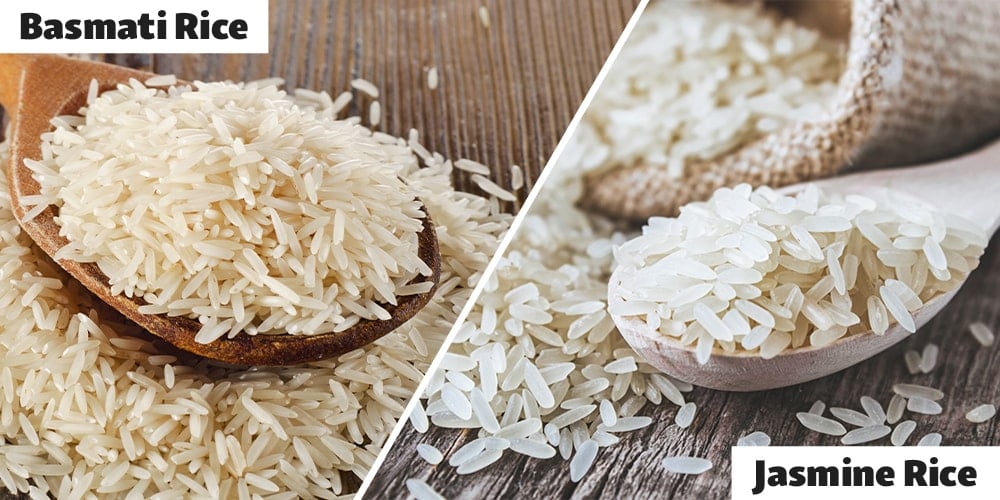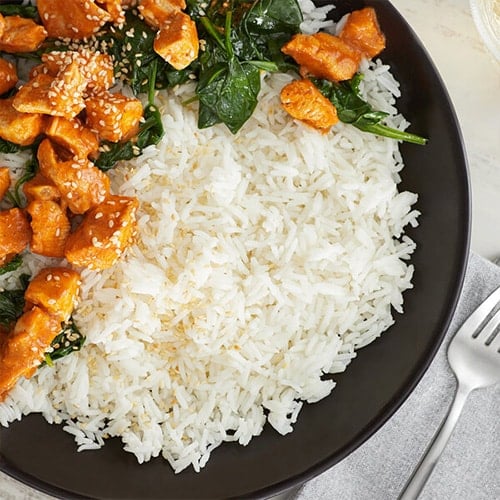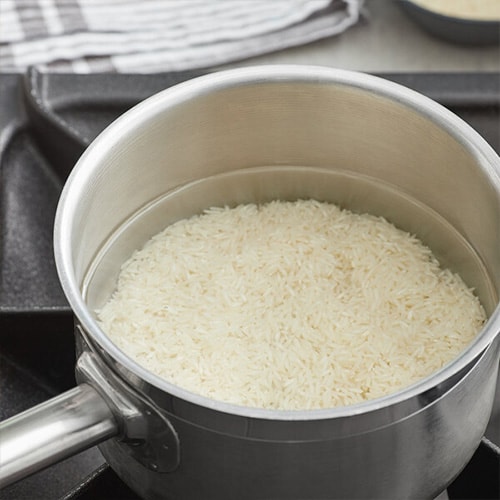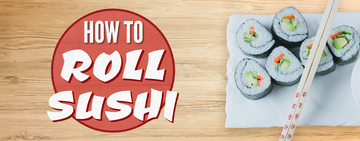What's the Difference Between Jasmine and Basmati Rice?
Last updated on Jan 21, 2025Michale LeRoyJasmine and basmati are different types of rice, but they often get mixed up because they’re both aromatic varieties. Visually, basmati rice grains are long and thin. In comparison, jasmine grains are slightly shorter and plumper. But that’s not the only difference between these two popular types of long grain white rice. Keep reading to learn more about where jasmine and basmati rice are grown and how to use them in your dishes.

Shown here: Uncooked basmati rice grains compared to uncooked jasmine rice grains. Basmati rice is longer and thinner than jasmine rice.
What Is Jasmine Rice?

Jasmine rice is long grain white rice with a floral aroma and a delicate texture. It’s grown throughout Thailand, Cambodia, and Vietnam. Most of the jasmine rice consumed in the US is white, but there are also brown varieties that still contain the hull.
What Does Jasmine Rice Taste Like?
Jasmine rice has a nutty, floral taste. Many compare the flavor of jasmine rice to buttered popcorn. It has a fluffy texture with plump, moist grains when cooked.
What Is Jasmine Rice Used For?
Jasmine rice is a staple food throughout Asia, but it’s also very popular with other cultures around the world. You’ll find it used in traditional Southeast Asian dishes, but also in Middle Eastern, Mexican, and Persian cuisine. Jasmine is the go-to rice to use with Thai curries, soups, and stir-fry dishes.
Where Does Jasmine Rice Come From?
Jasmine rice was first cultivated in Thailand in the 1950s and remains one of the country’s most well-known exports. A large percentage of the world’s jasmine rice comes from Thailand, but it’s also grown in Cambodia, Laos, and Vietnam. Cambodian jasmine rice and Thai rice often go head to head in global competitions for the best fragrant rice. In these countries, jasmine rice is a rich part of everyday culture, and its cultivation is taken very seriously.
What Is Basmati Rice?

Basmati rice is a variety of long grain white rice with fragrant qualities and a firm texture. It’s grown throughout India, Pakistan, and the Himalayas.
What Does Basmati Rice Taste Like?
Basmati has a nutty flavor with a hint of spice. It stays firm when cooked and has a chewy texture.
What Is Basmati Rice Used For?
Because of its firm texture, basmati works well in pilafs where the rice is the star of the show. The grains stay separate, providing a pleasing toothsome bite. Basmati is also the preferred rice to serve with Indian curries.
Where Does Basmati Rice Come From?
The majority of the world’s basmati rice comes from India and Pakistan, but basmati is also grown in Indonesia, Nepal, and Sri Lanka.
Basmati vs Jasmine Rice
Basmati rice comes from India and jasmine rice comes from Thailand, but which one tastes better? Both jasmine and basmati rice have a more pronounced aroma and taste than standard white rice. Choose jasmine rice when you want a fluffy, creamy dish. Try basmati in a pilaf, salad, or grain bowl where you want the texture of the individual rice grains to shine through. Both work well as a delicious base under sauces and curries, it just depends on the texture you want. Jasmine rice melds into the sauce, and basmati adds contrasting chewiness.
How to Cook Jasmine and Basmati Rice

Both jasmine and basmati rice benefit from a rinse before cooking. This helps to remove excess starch so the rice grains don't become too sticky. After rinsing, simply add the rice to a rice cooker or large pot and use the correct water ratio below. Basmati rice is dry and dense, so it requires more water than jasmine rice.
Rice Cooker Ratios
Depending on the type of rice cooker you use, ratios may vary. These are general guidelines for the correct rice-to-water ratios when using a rice cooker.
- Jasmine Rice - Use 1 cup of water for every cup of rice
- Basmati Rice - Use 1 1/2 cups of water for every cup of rice
Stovetop Ratios
Cooking rice on a stovetop isn't as efficient as a rice cooker, so more water is needed.
- Jasmine Rice - Use 1 1/2 cups of water for every cup of rice
- Basmati Rice - Use 2 cups of water for every cup of rice
To cook the rice, follow the instructions for your rice cooker. If you're using the pot method, bring the water to a boil, cover the pot, and lower the water to a simmer. Cook until the water is completely absorbed, usually about 15 minutes.
Jasmine and Basmati FAQ
We answer common questions about jasmine and basmati rice below:
Is Basmati Rice the Same as Jasmine Rice?
No, basmati and jasmine are not the same type of rice. However, they are both types of fragrant white rice.
Why Is It Called Jasmine Rice?
The name for jasmine rice doesn't come from its floral aroma, it actually comes from the color of the rice. The white rice grains resemble the white petals of the jasmine flower.
Is Jasmine Rice Long Grain?
Yes, jasmine rice is a type of long grain white rice.
Is Jasmine Rice the Same as White Rice?
Jasmine rice is a type of white rice. There are many varieties of white rice that fall under short, medium, or long grain. Jasmine rice and basmati rice are both types of long grain white rice.
Jasmine rice and basmati rice both make a delicious side dish, thanks to the aromatic qualities of the rice. Basmati is chewy and firm, while jasmine is fluffy and moist. The rice you choose depends on the texture you want to achieve in your dish.



